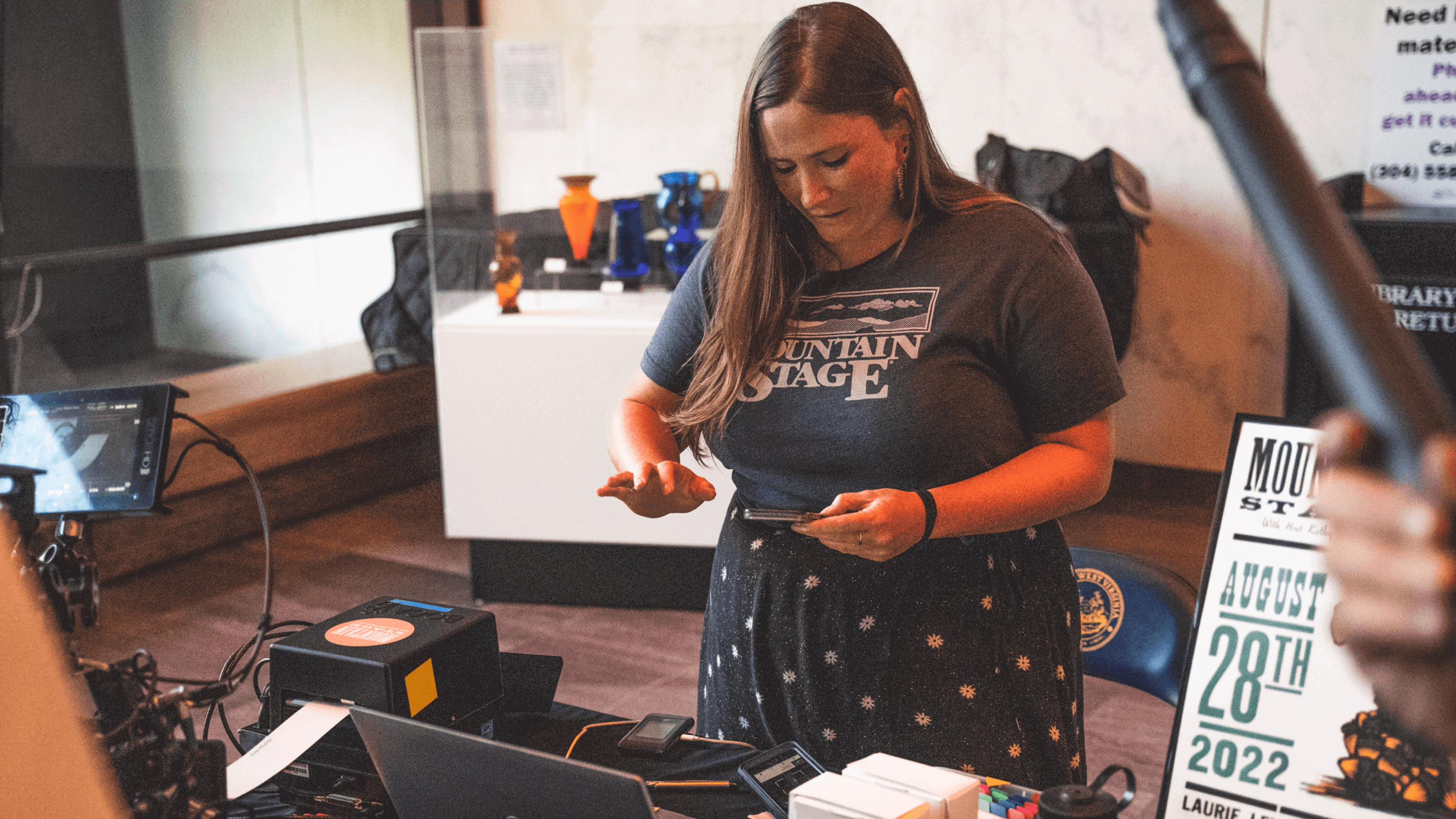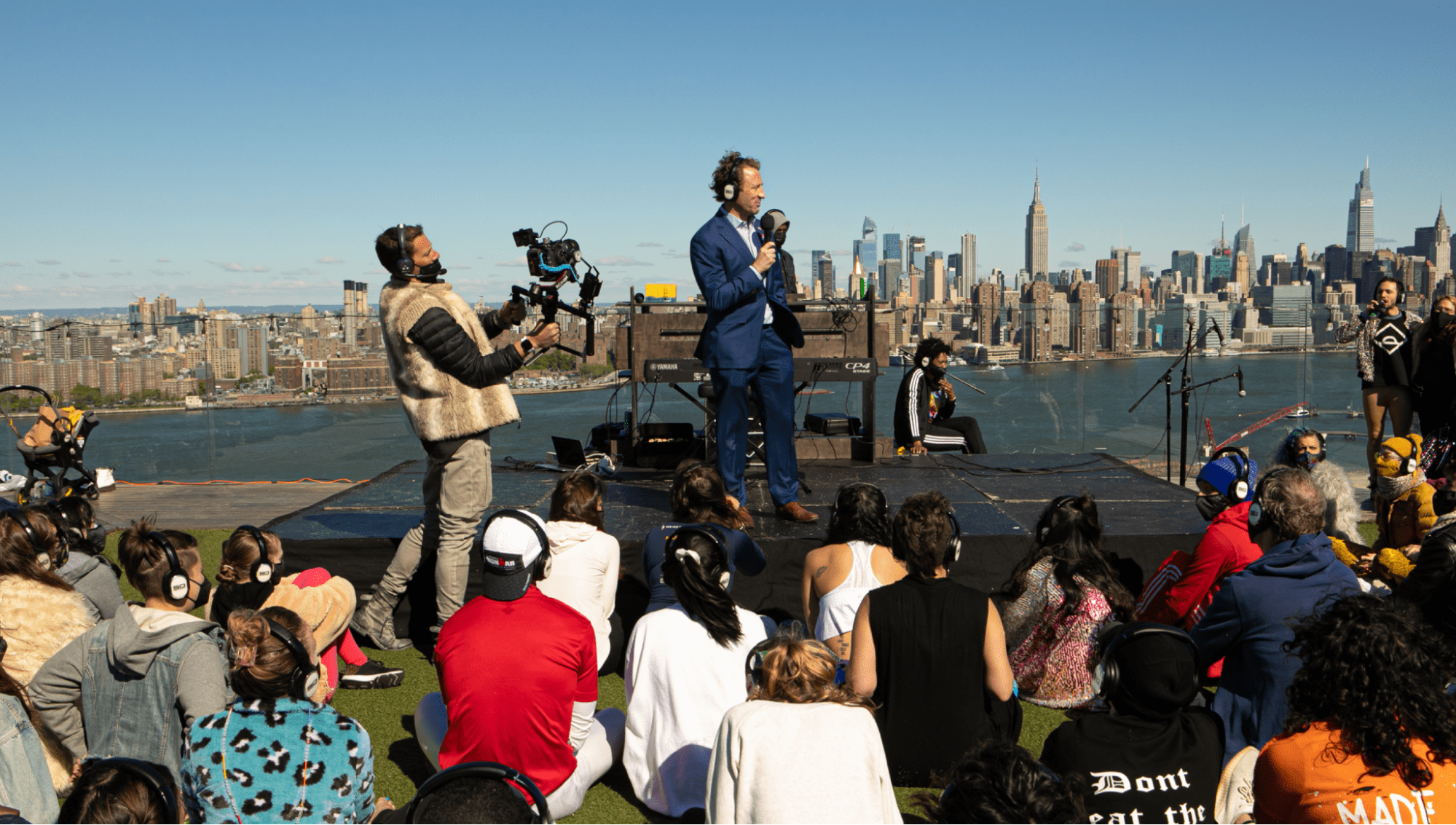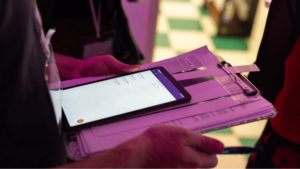It’s time to stop throwing spaghetti at a wall to see what sticks.
You can have the most incredible idea for a unique, immersive event experience — but without a strong sense of direction and purpose, it can easily flop. That’s where strategy comes to the rescue.
Strategic event management is all about optimizing your event for success.
That means meticulous planning, setting targets, and finding the right partners to help you get over the finish line and achieve those goals.
At Eventbrite, we believe strategic planning is the core of a successful event. So, to get you started, we’ve created this quick guide on how strategic event management works, how to create your event planning strategy, and event strategy examples to inspire you.
Hope to develop an event marketing strategy?
2. Set distinct goals for your event
3. Design your event around your goals
4. Break down your planning operations into bite-sized sprints
5. Sell and promote your event
6. Analyze the data to determine whether your event was a success

Why you need to be strategic when planning your event
It’s all well and good planning a fun event you think your followers will love — but it can be challenging to gauge success.
That’s when strategic event management can be a real lifesaver.
Strategic event management starts with identifying the goals behind your event and then building and optimizing a plan of action designed to help you achieve those goals.
By utilizing this goal-oriented approach to event planning, you’ll be able to place more emphasis on promotion and conversion — looking at the bigger picture to create more successful events (and better experiences).
Want to see how strategic event management works in practice? Take a look at event creator The Last Bookstore.
For a long time, the LA-based bookstore based its events on pre-sales. Because it was required to sell all the books it brought in for events (or go through the chore of sending them all back to the publisher), The Last Bookstore required authors to pre-sell a minimum number of books before its events — and if the quota wasn’t met, they canceled the events.
That approach wasn’t popular with authors or fans, so owner Josh Spencer deployed a new strategy.
Instead of asking authors to pre-sell loads of books, Spencer created a new strategy to improve the attendee experience and build community. To achieve this, he adopted a new three-pronged approach:
1) Organized big events for hot shot authors (no pre-sales needed)
2) Organized small, exclusive events for up-and-coming acts his team liked
3) Rented out the space to authors so they could organize events independently
In doing this, numbers jumped — The Last Bookstore has doubled the number of events it was hosting.
That’s strategic event management in action — and if you want to replicate The Last Bookstore’s success in developing your event management strategy, the good news is that the process is relatively straightforward.

How to develop an event management strategy
If you want to formulate an event management strategy for your future events, you can follow a tried-and-tested process. We’ve broken things down into six simple steps to keep things simple.
It doesn’t matter whether you’re hosting in-person events, hybrid events, virtual events, or all of the above. Follow these six steps to get a broader perspective on your events, enabling you to make them more efficient, more successful, and more fun!
1. Conduct market research
Event planning always needs to start with some market research.
If you want to develop a clear picture of who your target audience is, market research is fundamental to your success. Without understanding who your target audience is and what they want to see, you might waste all your time promoting your upcoming event to the wrong people in the wrong place.
Market research also helps you optimize your event format by looking at what your competitors are doing and where the gaps might be in satisfying consumer demand.
There are a few different ways you can gather this research.
- Create a survey and email it to previous attendees
- Analyze industry data from surveys and reports, such as the Eventbrite 2023 Event Trends Report
- Register for similar events to see how your competitors do things differently
You can also learn a lot by signing up for your competitors’ mailing lists, following them on social, or even just getting in touch for an open chat about the challenges of hosting events.
💡Pro Tip: Using the Eventbrite dashboard, you can search your previous events and segment your audience to find their key demographics. But you can take that a step further to find out which types of event registrations showed up, who was a no-show, and who did and didn’t engage with your promotional materials. Armed with this data, you can shape your next events to match your audience better.

2. Set measurable goals for your event
Strategic goals will help you create that in-demand experience (and ensure your business’ sustainability). Your goals should be tangible and easy to measure.
For example, maybe you want to generate $10,000 in revenue from your event or increase your follower count by 1,000 before the event launch.
Either way, make sure your goals are achievable and realistic. It would probably be slightly unrealistic if you set a goal to sell 5,000 tickets for a charity event in a town of 2,000 people, right?
It’s okay to be ambitious, but don’t stretch yourself beyond what’s possible — work within your budget and resources. This will make it easier to steer your operations in the right direction and gauge success after your event.
Data analytics are a great weapon you can utilize to help you put numbers on your goals, be specific, and then measure your success.
💡Pro Tip: By partnering with a platform like Eventbrite, you’ll gain access to real-time sales figures, attendance numbers, check-ins, social media engagement figures, and everything in between. You can also utilize tools our Mailchimp integration to send out post-event surveys that’ll help gauge your success in terms of customer satisfaction.
3. Design your event around your goals
Strategic event management uses your goals to consider the many factors involved in event planning, such as location, date, timings, venue, equipment requirement, etc.
Let’s say you throw regular party events in the South Side of Chicago. Maybe your market research data revealed that registrants from the North Side rarely seem to check in — so to achieve your goal of 90% attendance at your next party, you want to move to a more centrally located venue.
In this scenario, you might also need to reconsider your budget, performers, equipment hire, and line-up.
Again, this is where a dynamic event management platform like Eventbrite can streamline your decision-making.
Get strategic with Eventbrite.

💡Pro Tip: Find data from previous events to shape your goals. You can find it on your creator dashboard. You’ll be able to populate your event page, establish an event format, create different types of tickets, build seating plans, and ensure you’ve ticked off every item on your event planning checklist.

4. Break down your planning operations into bite-sized sprints
To make sure everyone on your event team is on the same page and working to achieve the same goals, try grouping all of your key tasks and collaborating with your team to tick off each group of tasks in focused sprints.
A sprint is a project management strategy in which your team spends a set amount of time focusing on completing one set of tasks. For example, you might group your vendor bookings and line-up confirmations into one sprint and all your venue permits and insurance documentation into another sprint.
We recommend using free project management tools to collaborate and manage your event operations.
Time management apps like Todoist or Google Tasks can be particularly helpful if you’re breaking down your event planning tasks into sprints. You can set deadlines, send targeted reminders to your team, and check items off as you go so you can visualize where you’re at in the process.
💡Pro Tip: You can use the Eventbrite App Marketplace to download tools like Zapier or Workato to integrate your productivity tools or project management software to sit alongside your Eventbrite dashboard. That ensures you’ve always got up-to-date event data and sales information handy when assigning tasks and working on your sprints.

5. Sell and promote your event
Here at Eventbrite, event marketing is our bread and butter — and we think it’s one of the most exciting parts of event production.
Regardless of the goals you’ve set, you’ll struggle to achieve them with an empty venue. That’s why the event marketing process is a fundamental part of your event management strategy.
It all starts with ensuring you’re partnered with the right ticketing platform. You need to make sure you’re using a flexible platform that’s recognized, trusted, and highly visible. This will make it easier to turn leads into customers.
For example, by setting up your event page on Eventbrite, you’ll gain visibility on the world’s biggest events platform — making it easy for users to discover your event. You can also set up custom ticket types VIP packages, create discount codes, and create assigned seating plans to ensure you can offer the right ticketing options for your target market.
Next, utilize your market research to promote the right content to members of your target audience using the right platforms.
💡Pro Tip: Use Eventbrite’s Marketing Tools to A/B test social media and email content — putting out two versions to see which works best — generate content ideas through AI, and use advanced targeting to make sure you’re posting and emailing those most likely to want to attend your events.
Keep leads warm with new event announcements and updates

6. Analyze the data to determine whether your event was a success
The scoreboard never lies. After your event, it’s time to assess social media engagement, email activity, and your ticket sales page to determine your reach and event success. But your event analysis should also involve looking at your check-ins versus your no-shows to determine attendance rates across different demographics and locations.
For event organizers with more community-driven goals, this step might involve analyzing changes in your follower, or subscriber counts on different social media accounts, tallying up new positive reviews or comments, or even documenting and assessing press coverage of your event.
In doing so, you’ll be able to determine whether you’ve achieved your strategic goals — and then use any lessons learned to change your event format for upcoming dates.
💡Pro Tip: The Eventbrite Organizer App is a huge help in generating great data. You can use it to generate custom reports on when people showed up, which venue entrances were getting used, how many people bought tickets at the door, and much more.
Start strategizing for your events
If you’re ready to level up your event game, it’s time to adopt a more strategic approach.
Strategic event management will enable you to better understand your audience and create goals that will grow your business and deliver amazing experiences — and Eventbrite is here to support you every step of the way.
By utilizing our range of tools, you can create and customize your event, sell tickets, optimize your event marketing strategy, and gain access to big data that will give you the extra edge you need to create successful events.







